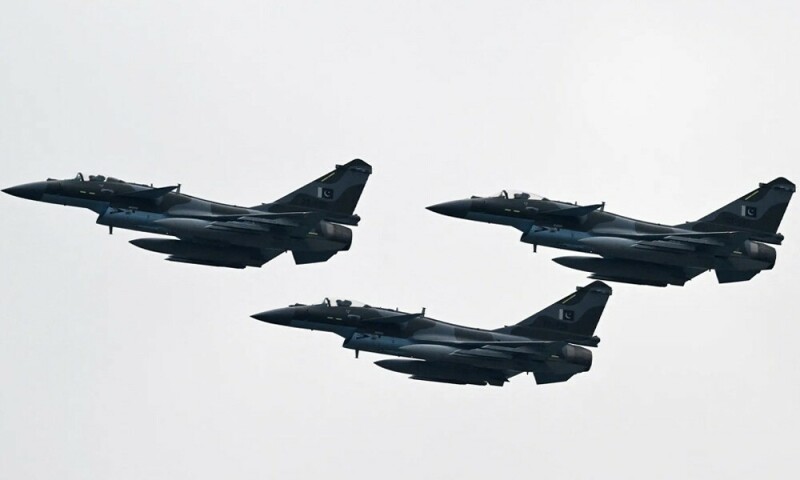Shares of Chinese defense-manufacturing companies rallied on Wednesday, as the escalation in border tensions between Pakistan and India boosted the outlook for mainland exporters, Bloomberg said in a report.
Pakistan, which has imported a bulk of the defense equipment including J-10C fighter jets, shot down five Indian planes, including three French Rafale jets.
“This led to speculation that Chinese defense platforms may have been deployed in the conflict, given Pakistan’s recent heavy reliance on such arms imports,” the report said.
According to Bloomberg, an index of Chinese defense companies in mainland China jumped 1.6% to a two-week high. The J-10C fighter jet maker Avic Chengdu Aircraft Co. was among the biggest gainers, with its stock rising the most since October 14.
Most modern domestically-developed Chinese platforms have not yet been battle-tested, said Eric Zhu, a defense analyst at Bloomberg Intelligence.
“So having the combat record is a plus for their export potential.”
Pakistan has been buying the bulk of its arms from China. Imports from the country made up 82% of Pakistan’s stock from 2019-2023, compared to 51% from 2009-2012, the report said.
Tensions between Pakistan and India rose after an attack in the Indian Illegally Occupied Jammu and Kashmir (IIOJK) killed 26 men, for which New Delhi blamed Islamabad.
Pakistan denied the allegations and called for a neutral investigation of the attack.
In the wee hours of Wednesday, Pakistan military brought down five Indian Air Force jets, including three Rafale, in retaliation following Indian missile attacks.
At least 26 Pakistanis were martyred and 45 were injured in Indian missile attacks inside Pakistan at 6 locations, Director General of Inter-Services Public Relations (DG ISPR) Lt Gen Ahmed Sharif Chaudhry said in a press conference.
Pakistan shot down five Indian jets, including three Rafale, one MiG-21, and one SU-30, he informed.
Tensions between Pakistan and India escalated sharply following a deadly April 22 attack in Pahalgam, Occupied Kashmir, which killed 26 people, most of them tourists.
India blamed the assault on cross-border elements without offering evidence, a claim Pakistan strongly rejected, calling instead for an independent investigation.
In the days since, both countries moved into a state of heightened alert. Pakistan reinforced its military presence along the border, anticipating a possible incursion. Meanwhile, the Indian leadership granted its armed forces “operational freedom,” further inflaming fears of escalation.
Despite backchannel diplomatic efforts to contain the fallout, tensions remained high.


